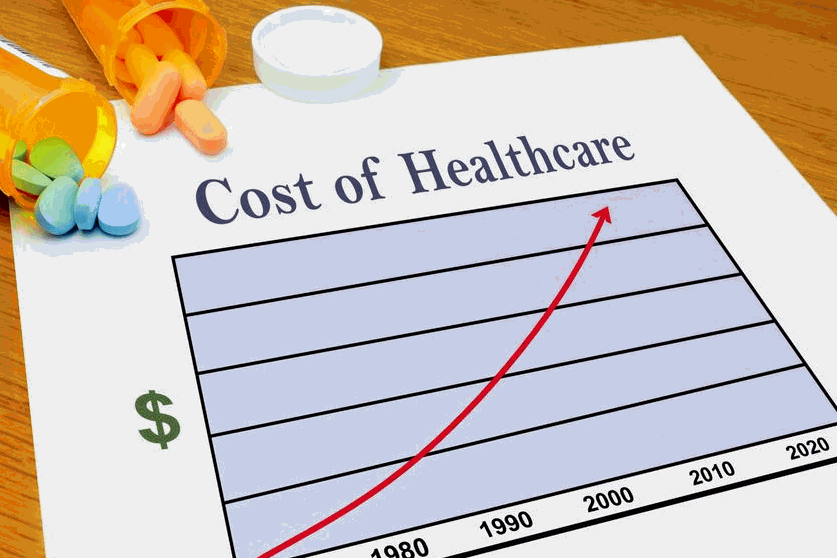Retirement Planning: Healthcare Risk
Aug 2, 2017 • Written by Paul Staib | Certified Financial Planner (CFP®), MBA, RICP®
Blog Home » Health Savings Accounts (HSAs) » Retirement Planning: Healthcare Risk

Healthcare will be one of the largest categories of expense for most retirees – and medical inflation is expected to run 2 to 3 times faster than general inflation.
Retirees can cope by fine-tuning their Medicare coverage. That can help control spending in retirement. But what about pre-retirees, who still have the opportunity to plan ahead for the healthcare cost challenge?
The numbers do sound daunting. A healthy 65-year-old couple retiring this year can expect to spend $322,000 (today’s dollars) on Medicare premiums and dental insurance, according to Healthview Services, a maker of healthcare cost projection software. Add deductibles, copays, hearing, vision, and dental cost sharing, and that figure rises to $404,000.
That certainly will make healthcare one of the largest areas of expense in retirement. And Healthview bases those figures, in part, on its projection that healthcare inflation will rise at a 5.47% annual rate for the foreseeable future. Public policy poses another risk: the federal government could implement reforms to Medicare – such as premium support – that would shift a greater share of the out-of-pocket burden to retirees.
With that background, let’s consider three planning strategies that can help mitigate retirement healthcare costs: (1) retirement timing, (2) investing, and (3) two tax-advantaged vehicles that can play a role – specifically Health Savings Accounts (HSAs) and Roth IRAs.
While certainly not the most popular option, the best and most effective approach to hedge healthcare costs is to work a bit longer and delay filing for Social Security.
A delayed filing can boost retirement income significantly. Social Security’s primary insurance amount rises by 8% for every 12 months of delay beyond your full retirement age (currently 66) until age 70 – a powerful boost to income that can help fund rising healthcare costs. What’s more, the annual cost-of-living adjustment helps keep up with inflation, albeit at a slower pace than medical inflation.
And working longer also means more net years of employer-subsidized health insurance, and fewer years of Medicare premiums and out-of-pocket costs. It also provides an opportunity to sock away additional savings in your 401(k), perhaps utilizing catch-up contribution limits.
Investing
Financial advisers often use income replacement ratios to measure the income needed to maintain lifestyle in retirement; the standard rule of thumb is 75% to 80% of pre-retirement income. But that captures only part of a worker’s future healthcare spending needs, since employers typically pick up 75% of those costs.
Income replacement ratio calculations also fail to capture the higher inflation projected for healthcare. That said, using a ratio-based saving plan still can be useful. Projecting $425,000 in future healthcare costs, a 55-year-old man with life expectancy of 87 (who plans to retire at 65) could meet those expenses by investing $3,000 annually for 10 years.
In addition to the cost of healthcare premiums and out of pocket expenses, you may also want to address long-term care risk. Do you want insurance, or do you want to create a bucket of liquid reserves in the event of a long-term care need? And how you want to allocate investments in that bucket? Like other general healthcare expenses, long-term care costs also are rising faster than general inflation. Five-year annual growth in the cost of nursing care a private room is 3.5%, according to Genworth’s annual cost-of-care survey. Given these elevated healthcare inflation rates may call for slightly higher equity allocations near or in retirement in order to keep pace.
Health Savings Accounts
Some experts believe health savings accounts (HSAs) will evolve into a platform for long-term saving to meet retirement healthcare costs. A separate post provides and overview of Health Savings Accounts.
HSAs are available to workers in high-deductible health insurance plans. The accounts can be used to meet ongoing deductible and other out-of-pocket healthcare costs. For 2021, plans can have a maximum out-of-pocket cost of $7,000 for individuals and $14,000 for families. Some employers help offset those costs with contributions to the accounts.
The tax benefits of HSAs are compelling: Contributions are tax-deductible, investment growth and interest are tax-exempt, and withdrawals spent on qualified medical expenses also are tax-free. (Funds withdrawn for nonmedical expenses are taxed at the account holder’s marginal tax rate; if before age 65, the funds are subject to an additional 20% penalty). HSAs don’t have required minimum distribution requirements, and they are portable – they are individually owned and not tied to employers.
HSAs have been around only since 2003, and thus far long-term investing has taken a back seat to usage of the accounts to meet current healthcare expenses – 96% have their funds in cash, according to research by the Employee Benefit Research Institute. The ideal power of HSAs would be to allow the investments to grow, using them for healthcare expenses in retirement.
After age 65, an HSA can be used to pay a variety of qualified medical expenses, including Medicare premiums (with the exception of Medigap premiums) or long-term care premiums. Details can be found in IRS publication 969.
The triple tax benefit increases buying power, especially when compared with the benefit of drawing down from a 401(k), which is subject to ordinary income tax on contributions and investment gains. One study calculated that a worker earning $60,000 would need to save 25% less to meet medical expenses by splitting annual contributions to a 401(k) and HSA.
Another tax consideration for high-income retirees: qualified HSA withdrawals are not reported as income, which means they are not counted in the formula that determines whether you must pay high-income surcharges on Medicare Part B or D premiums.
One caveat: it’s important to navigate carefully the interaction of HSAs and Medicare during the transition period away from workplace insurance. The key issue is that HSAs can only be used alongside qualified high-deductible health insurance plans, and Medicare does not qualify as a high-deductible plan. That means that if a worker or a spouse covered on the employer’s plan signs up for Medicare coverage, the worker must stop contributing to the HSA, although withdrawals can continue. Refer to this post for more about HSAs in retirement.
Roth IRAs
If you are not eligible for an HSA, investing in a Roth IRA – and/or doing a Roth conversion – can provide a second-best option. Much will depend, of course, on the specifics of your tax situation. Roths get the income tax out of the way upfront, allowing tax-free withdrawal of contributions and investment returns in the future. Roths also are not subject to required minimum distributions during the lifetime of the owner, which means you can preserve assets to meet healthcare expenses. Roth conversions are often advantageous in low-marginal-income tax bracket years, especially in the years before claiming Social Security. A series of small Roth conversions that “fill up” your tax bracket can make good sense.

Paul Staib | Certified Financial Planner (CFP®), MBA, RICP®
Paul Staib, Certified Financial Planner (CFP®), RICP®, is an independent Flat Fee-Only financial planner. Staib Financial Planning, LLC provides comprehensive financial planning, retirement planning, and investment management services to help clients in all financial situations achieve their personal financial goals. Staib Financial Planning, LLC serves clients as a fiduciary and never earns a commission of any kind. Our offices are located in the south Denver metro area, enabling us to conveniently serve clients in Highlands Ranch, Littleton, Lone Tree, Aurora, Parker, Denver Tech Center, Centennial, Castle Pines and surrounding communities. We also offer our services virtually.
Read Next
Behavioral Finance Quiz: This Is Your Brain on Money
• Written By Paul Staib | Certified Financial Planner (CFP®), MBA, RICP®
The human brain is not a rational economic actor. When faced with uncertainty, even the best investing minds may throw…
Staib Financial Planning, LLC Receives 2022 Best of Lone Tree Award
• Written By Paul Staib | Certified Financial Planner (CFP®), MBA, RICP®
Press Release FOR IMMEDIATE RELEASE Staib Financial Planning, LLC Receives 2022 Best of Lone Tree Award Lone Tree Award Program…
